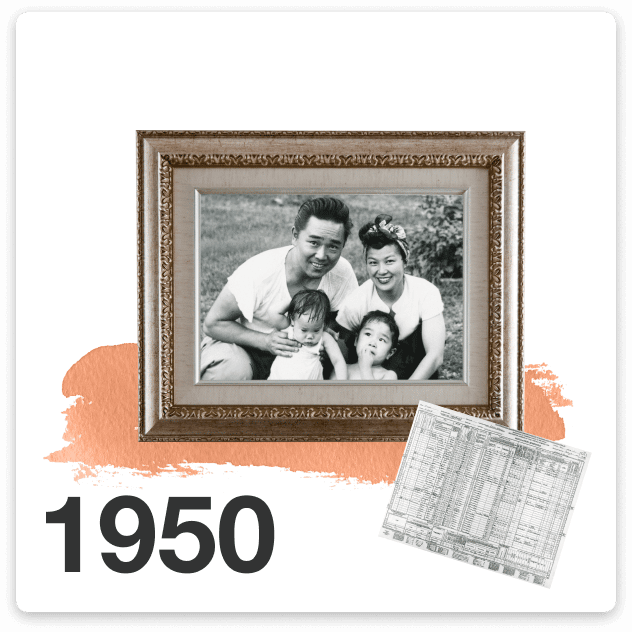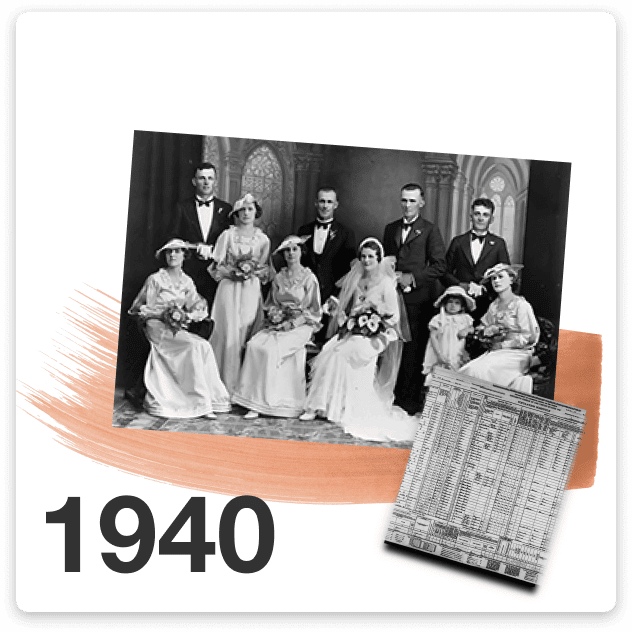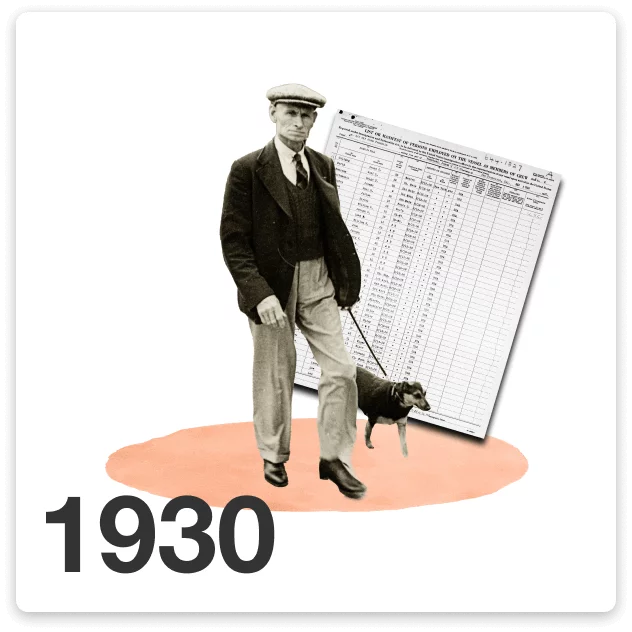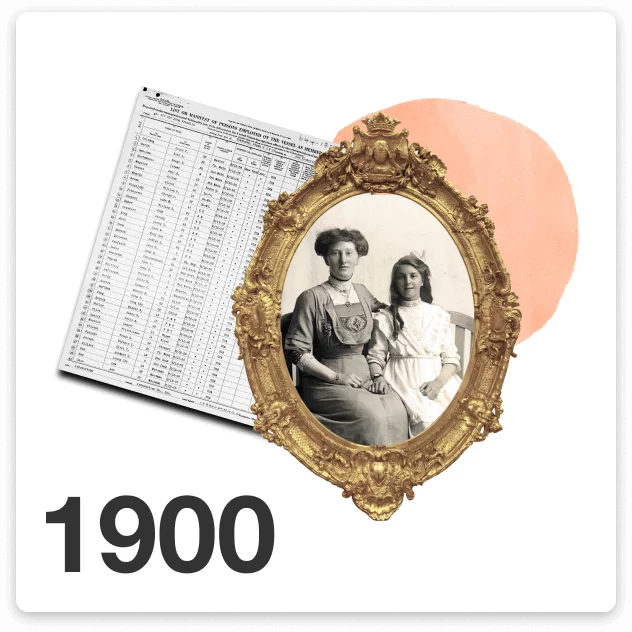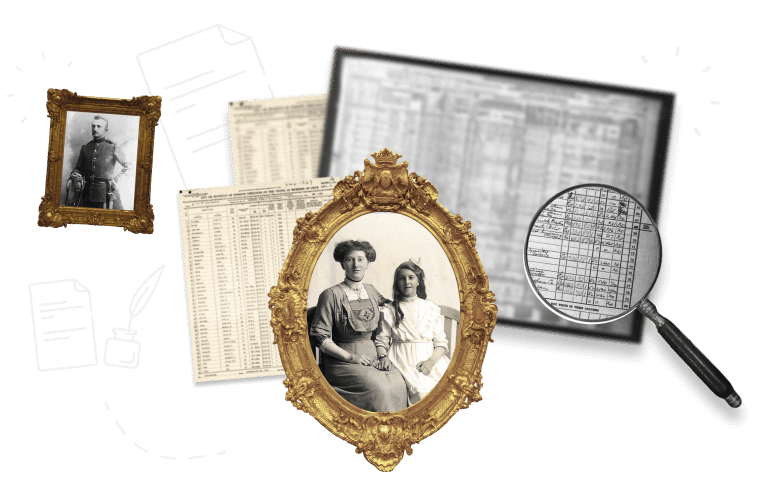
Trace your family in the U.S. Census
Search nowU.S. census records provide fascinating decade-by-decade snapshots of our American ancestors in the context of their family groups, neighborhoods, and communities.

Dive into the U.S. census
Click on an image to read more

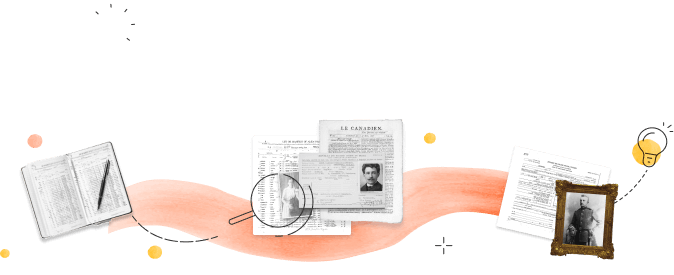
What is a census?
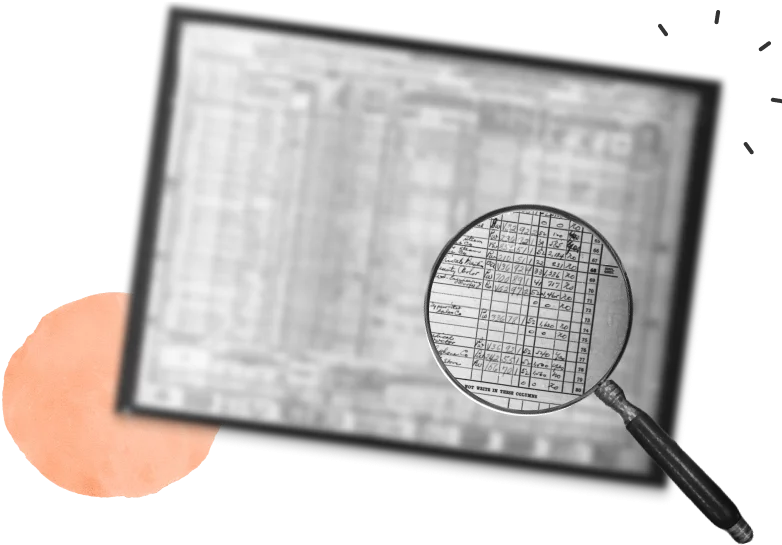
A census is an official count of a population initiated by the government. It is taken periodically to evaluate changes in population that can help it make critical decisions about governing that region. While censuses have been taken by governments all over the world for millennia, the United States was the first country to institute it as a legal requirement. The first United States census took place in 1790, and subsequent censuses have been taken every 10 years ever since.
What can census records tell you about your ancestors?
Census records were structured meticulously and, for most of American history, filled out by hand. The questions appearing on the form changed from decade to decade, so some census records contain more information than others. The details in a census record might include:
- The names of everyone in the household
- Their place and date of birth
- Their ages
- The languages they spoke
- Their occupations
- Their literacy
- Information on their education
- Their citizenship status and place of origin if they were immigrants
- Place of residence
- Whether the place of residence was owned or rented by the head of the household
If you can find your ancestor in multiple censuses, you can draft a rough outline of major events that occurred during that period of their lives. You may be able to see, for example, that your ancestor moved, changed careers, got married, was widowed, or had a child who grew up and moved away.
Are census records public?
Census records are released for the public to view and search 72 years after that census was collected. Before 72 years are up, only the individuals mentioned in the records (or their heirs or legal representatives) may be given access to the records upon special request.


Tips on searching for your ancestors in U.S. census records
Build an ancestor timeline
Start with the most recent events and work your way back. Write down all the details mentioned in each record and create a timeline for each ancestor that includes their location, age, profession, and family situation at each point in time that was captured by the census record.
Look up codes and abbreviations
Since censuses were filled out on paper and by hand, codes and abbreviations were used to save space and effort.
Explore the neighborhood
Censuses provide a map to the human landscape of your ancestors’ neighborhood. Look at the records preceding and following your ancestors’ records to find out who was living nearby.
Don’t believe everything you read
While censuses are an invaluable source of information, they should be approached with a critical eye: the information was given by a human and recorded by a human, and miscommunications and misspellings were likely. Always verify information as much as you can by cross-referencing additional sources.


Focus your research with the Census Helper™
MyHeritage’s free Census Helper™ tool scans your tree and compiles a list of your relatives who likely appear in the 1950 U.S. Census. Armed with this list, you will know exactly which family members to focus on in your research. If you don’t yet have a tree on MyHeritage, you can upload one as a GEDCOM and use the tool for free.
Search U.S. census records on MyHeritage
MyHeritage offers the full set of U.S. censuses that have been released to the public from 1790 onward — and when you search using MyHeritage’s powerful search engine, it’s much easier to find what you’re looking for. You can search according to any criteria you have, even if it’s just a first name. The search engine automatically identifies spelling variations, nicknames, and other versions of the same name from other languages.
